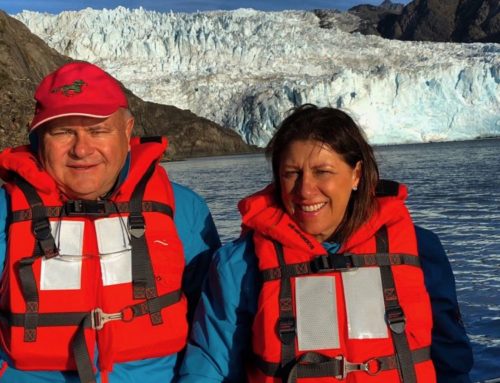This is a kind of weird story to put on the blog, but I was so moved when I heard about the sinking of the S.S. Princess Sophia on our recent Alaskan cruise, I thought I would share it with you.
In 1918 the Princess Sophia hit the Vanderbilt Reef, in Alaska’s Inside Passage taking all 350 passengers and crew with it. After a talk on board about the tragedy the Captain told us what time we would pass the reef, so later that evening I stepped outside of my cabin into a bitter gale and saw the beacon that now marks the Vanderbilt Reef. Reflecting on the people who perished in the chilling, icy waters I could only imagine how terrifying it must have been.
The tragedy is referred to as “The Titanic of the North,” as it is the worst maritime disaster to ever occur in the Pacific Ocean. It’s an untold story as it happened within days of WWI ending and the media at the time decided they did not want to burden people with sad news, when there was so much to celebrate.
This year marks the 100thanniversary. The Vancouver and British Columbia Martine Museums have put together an exhibition with artefacts and stories to mark the occasion. If you happened to be in Victoria, Vancouver, Juneau, Dawson City or Seattle look out for the exhibition.
So, here’s the story.
It was 23 October 1918. The winter was cold and Princess Sophia was on her last run from the small town of Skagway in Alaska to Vancouver. People were desperate to get on the last ship before the winter really set in so tickets were at a premium.

During the trip to Skagway there had been an outbreak of influenza on board. Captain Leanard Lock, an experienced captain lost crew from the illness and had to find six new crew members. As well, he needed to find the doctor in Skagway, Dr William Garbie as he was concerned about the influenza epidemic worsening and did not want his ship quarantined when it arrived in Vancouver.
This along with the delay in loading the cargo meant the ship left three hours late.
Among the cargo was a 40-year old horse, ‘Old Bill’, a prized possession of one of the traveller, gold bars to the value of US$600 million from the gold rush and a woman named Irene. She was unwillingly leaving Skagway on her doctor’s orders to improve her health. As she departed she asked her husband to come and find her should anything happen to her.
Concerned about arriving in Vancouver on time, Captain Lock left hurriedly at 10pm.

It’s not uncommon the have snow storms at that time of year, but the weather deteriorated quickly and the Captain Lock become disoriented. He could not see the bow of the ship. The narrow passage with a mountains range under the canal was prone to storms and high winds and there were no markers to identify the Vanderbilt Reef in Lynn Canal.
Going full steam ahead, the Princess Sophia hit the reef head on at 2am, just 4 hours after leaving Skagway.
The distress call went out and unlike the Titanic recuse boats flocked to their aid from Juneau and Haines. But, the storm was so bad they couldn’t get near the ship.
The ship sat on the reef for one and a half days until the evening of 25 October 1918. Captain Ledbitter who had come to their aid suggested they start the rescue mission at 430 pm, but Captain Lock said he would see the storm out. Shortly after the storm tripled in intensity, the waves became so strong they pulled the ship back off the reef opening up the hull.

Captain Locks sent two messages. The first read, “Taking water and foundering, for God’s Sake, come and save us.” As the water rose to the desk in the wireless room he wired again, “You talk to me so I know you are coming.”
The boat sank quickly downing all its passengers and crew. In the morning the rescuers arrived to a calm sea, but all they could see was the mast.
The inquest took six years. Captain Ledibetter and other captains involved in the rescue testified they had suggested to Captain Lock to start rescuing the passengers on Saturday afternoon, but Captain Lock wanted to wait the storm out. Back then, no one would question a captain especially from a lower rank.
Today, all bridge officers and ship are taught Crew Resource Management which means anyone can speak regardless of your rank. Back in 1918 this did not exist.
A subsequent inquiry ruled that some or all of the passengers might have been saved in a brief window on the 24th before the winds picked up, but the Captain ruled against it fooled by the faulty barometer and hopes the weather would calm.
The grim task of recovering the bodies went on for weeks as the divers found many of the passengers still in their cabins. However, Irene was not found so her husband, true to his word, hired one private diver after another until she was found. Exhausted and penniless, he died and they were buried together.






Tragic, sad story and nice tribute. I really felt cold reading it! Thanks for sharing.
Hi Alistair, Lovely to hear from you and so excited about your Arrowtown purchase. Tim and I are going down there this week so are excited to see it jx
What a sad story.
Lovely to hear from you… I thought it was very sad too jx